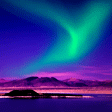- Home >
- Our Actions >
- Ambassador report
6
Comments
Evolution of urban heat island in Khartoum |
|---|
|
by Razaan Abakar | 20-08-2017 19:11
|
|
Introduction Aspects of urban growth in Khartoum: Khartoum complex is comprised of three towns (Khartoum, Khartoum North and Omdurman) situated at the confluence of the White Nile and the Blue Nile. Like many other capital regions around the world, it has become increasingly urbanized during the past three decades as the national capital of Sudan. The population censuses carried out in 1983 and 1993 marked Khartoum as the most outstanding population agglomeration throughout the country, with an annual growth rate of 6.29% since 1983. The population densities in the years 1956, 1983 and 1993 were estimated as 24.1, 85.9, 162.8 persons per square kilometre, respectively (Ministry of Culture and Information, 1994). According to the 2008 Sudan census committee, the State of Khartoum is now accommodating about 5.2 millions (Sudan Watch, 2009), i.e. % of the total population of the country. This elevates the population density to � persons per square kilometre. Several reasons can be held responsible for this enormous population growth: expansion of squatter settlements, widespread rural–urban migration, large influx of southern Sudanese because of civil war, Sudanese migration from western Sudan because of drought, desertification and ongoing conflicts in Darfur, return of expatriates from the Arabian Gulf region and so on. Accompanying this dramatic population explosion has been the expansion of other human activities within the city, including the extensive use of cars and vehicles, leading to air pollution, the spread of buildings, factories, paved roads, widespread use of air conditioning and so on. Integrating remote sensing and geographic information systems (GIS), assessed the urban sprawl of the Greater Khartoum area during the years 1972, 1987 and 2000. Table I demonstrates the expansion of the residential, industrial and farm areas at the expense of other land uses and land cover. Source: http://onlinelibrary.wiley.com |

|
|
|










 Previous : Mining and it's Problems
Previous : Mining and it's Problems 









6 Comments
have to fix it
Posted 02-02-2018 16:37
a major problem
Posted 02-02-2018 16:37
@Prayash, it's a serious problem facing us, unfortunately in my country there is no serious solution taking in response, anyway thank you ^_^
Posted 06-09-2017 14:26
@daon, I also hope that, thank you ^_^
Posted 06-09-2017 14:21
Hi Razaan. Thanks for providing a detailed report about Urban Heat Island of Khartoum. After reading the articles of many ambassadors, it seems like the issue of UHI needs immediate response. The mitigation measures like green roofs, placing of reflective materials, tree plantations and many more should be immediately implemented.
Posted 22-08-2017 03:28
Hi Razaan! Thanks for sharing your report on UHI in your country.
As we can see in the graphs you attached, UHI is one of the most fast growing problem, as urbanization is. Hope we could find an answer for this in near future!
Posted 20-08-2017 22:52